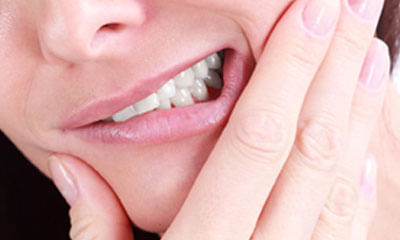Dental Implants!
Modern oral implantology can be traced since the 1960s, and it is now a predictable and successful treatment modality for edentulous (toothless) situations. A dental implant is a prosthetic tool that is fixed into the jaw to provide support to a crown, fixed denture, or removable denture.
A dental implant is a titanium pillar which helps to provide support when embedded into the jaw bone. Such titanium pillars are compatible with the human body and thus, are incredibly safe for usage. The implants then blend in with the bones and tissues and create a stable foundation for teeth restoration. By indulging into a process called abutment where the repair is attached with the help if a connector, a natural look is then obtained for the implants.
Dental implant procedure
Problems solved by dental implants
Used in for any tooth replacement; particularly useful for the:
Single tooth replacement
Completely toothless state
Long toothless spans.
When a fixed partial denture is compromised due to:
Weak abutments
Long toothless spans
Unfavorable number & location of abutments.
When a conventional complete denture may be compromised due to:
Poor muscular coordination.
Low tolerance of mucosal tissues
Hyperactive gag reflex
Procedure for dental implants
The surgical site is thoroughly cleaned and painted with 1% povidone-iodine solution to bring down the bacterial colony count in the mouth.
Incision: standard trapezoidal incision or branemark system buccal incision is made midway between the crest and depth of the vestibule, and then the flap is reflected lingually.
Drilling into bone: the manufacturer gives a guide to the sequence of drills (sizes) to be used to make proper sized drill hole for a particular implant.
Drilling: â the first drill invariably is the round one, to puncture the cortex at the crest. After that, the drills are used in ascending order of thickness.
Drilling speed: bone must be drilled at a speed less than 800 rpm. The drills are marked for depth to guide the surgeon as to how deep the hole should be.
Insertion: implants are provided in a sterile pre-packed container with an implant carrier, which is gently taken to the drilled site and hand twisted to engage a few threads, and then a special ratchet is used to screw the implant up to its required depth. The implant carrier is removed then and healing cap is screwed on to the visible implant top.
Irrigation: it is done with normal saline to keep the local bone temperature at normal body temperature and also to flush out the bone to debris from the drill hole.
Closing the wound: Black silk is the preferred suture material with a traumatic curved needle. Interrupted sutures are placed and are removed 5-7 days postoperatively.
Advantages of dental implants
Some of the advantages are as follows:
Preservation of bone: the placement of an implant will ensure that the bone level is maintained in that region.
Teeth can be positioned for aesthetics: with an implant, the teeth may be positioned where the natural one existed rather than in the neutral zones for stability.
Maintenance of vertical dimension: the loss of vertical dimension decreases due to wear and bone resorption. Implant dentures can maintain the vertical dimension, as bone resorption is minimal.
Occlusion: easier to establish proper occlusion and occlusal loads can be directed.
Improved mastication: enhanced bite force and masticatory efficiency.
Increased stability and retention
Reduced size of the prosthesis
The enhanced success rate of prosthesis
Healthy smile with dental implants
Disadvantages of dental implants
Some of the disadvantages include:
Expensive
Prolonged treatment duration
Involves a surgical procedure.
After effects of dental implants
Intraoperative
Tear of flap
Puncture of the buccal or lingual cortex
Lack of irrigation or insufficient irrigation
Lack of primary stability of implants
Rarely fracture of the implant
Immediate postoperative
Unusual pain
Rarely hemorrhage
Swelling
Nerve injuries
Delayed
Infection
Secondary hemorrhage
Nerve injury
Loosening of implant
Loss of implant
So, if a person wants healthy and natural teeth, then go for dental implants. It is found that the success rate for dental implants is 98%.



+1.svg)
